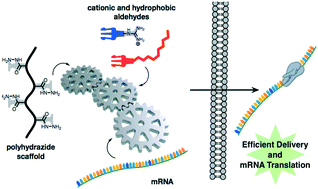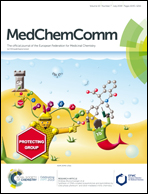Messenger RNA delivery by hydrazone-activated polymers†
Abstract
The intracellular delivery of DNA and RNA therapeutics requires the assistance of vectors and/or nucleotide modifications to protect the nucleic acids against host nucleases and promote cellular internalization and release. Recently, messenger RNA (mRNA) has attracted much attention due to its transient activity and lack of genome permanent recombination and persistent expression. Therefore, there is a strong interest in the development of conceptually new non-viral vectors with low toxicity that could improve mRNA transfection efficiency. We have recently introduced the potential of polyhydrazones and the importance of the degree of polymerization for the delivery of siRNA and plasmid DNA. Here, we demonstrate that this technology can be easily adapted to the more interesting complexation and delivery inside living cells of mRNA. The polyplexes resulting from the combination of the amphiphilic polyhydrazone were characterized and the transfection efficiency and cell viability were studied for a discrete collection of functionalized polyhydrazones. The results obtained demonstrated the versatility of these polymeric vectors as excellent candidates for the delivery of mRNA and validate the easy adaptability of the technology to more sensitive and therapeutically relevant nucleic acids.



 Please wait while we load your content...
Please wait while we load your content...